LAB REPORT
Science and Technology Making Headlines
Oct. 27, 2017

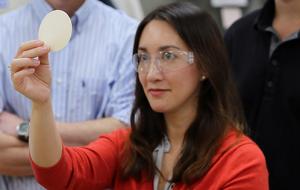
Amanda Wu and colleagues have successfully 3D printed composite silicone materials that are flexible, stretchable and possess shape memory behavior. Photo by Carrie Martin/LLNL
One step beyond 3D printing
Researchers at Lawrence Livermore National Laboratory have for the first time 3D printed composite silicone materials that are flexible, stretchable, and possess shape memory behavior. This discovery could lead to form-fitting cushioning activated by body heat, such as in helmets or shoes.
The researchers added hollow, gas-filled “micro-balloons” into silicone-based ink, letting them 3D print devices at elevated temperatures that then shrink when it cools. When reheated, the gas in the micro-balloons expands, causing the structure to return to its original shape. When combined with 3D printing, this shape memory behavior is often referred to as “4D printing,” with the fourth dimension being time.
4D-printed objects change shape when heated, then revert to a more compressed, compact shape when they cool.

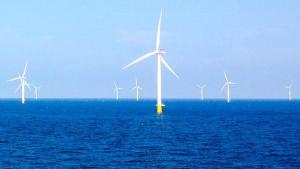
The Block Island wind farm in New England is America’s first offshore wind facility.
Winds of change
Wayne Miller combines physics and high-performance computing to optimize the electricity from wind. As the associate program leader for wind and solar power and deputy director of the High Performance Computing Innovation Center at the Lawrence Livermore National Laboratory, Miller builds simulations to engineer the best wind farm, yielding power gains of up to 5 percent.
“It’s a marginal improvement over not having that capability,” Miller admits. But small differences quickly add up in the multibillion-dollar marketplace for wind power.
Miller and his team use supercomputers to study how the flow of air in the atmosphere might affect wind-farm operations. It starts with a numerical weather prediction system developed by the U.S. government -- the Weather Research and Forecasting Model. The researchers then add turbines to the mix. The models incorporate the turbulent wakes from upstream turbines to reveal the best arrangement of towers. This depends on factors such as topography, wind conditions and the turbines themselves, which are so large offshore that they need even more spacing.

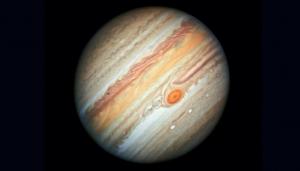
Jupiter is not only the largest planet in our solar system, but it’s also the oldest, according to new research from Lawrence Livermore National Laboratory.
Jupiter’s age is an old story
As it turns out, Jupiter is one old timer, being the oldest planet in our solar system.
By looking at tungsten and molybdenum isotopes on iron meteorites, the team, made up of scientists from Lawrence Livermore National Laboratory and Institut fur Planetologie at the University of Munster in Germany, found that meteorites are made up from two genetically distinct nebular reservoirs that coexisted but remained separated between 1 million and 3-4 million years after the solar system formed.
"The most plausible mechanism for this efficient separation is the formation of Jupiter, opening a gap in the disc (a plane of gas and dust from stars) and preventing the exchange of material between the two reservoirs," said Thomas Kruijer, lead scientist on the research. "Jupiter is the oldest planet in the solar system, and its solid core formed well before the solar nebula gas dissipated, consistent with the core accretion model for giant planet formation."

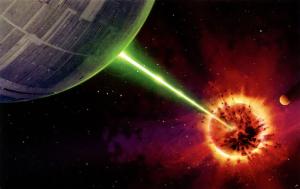
The Death Star superlaser in the movie “Star Wars” was thought to be scientifically impossible though LLNL researchers have added plasma to create a superbeam of their own.
Superbeam activate
Since its introduction in the 1977 film "Star Wars," the Death Star has remained one of science fiction's most iconic figures. The image of Alderaan's destruction at the hands of the Death Star's superlaser is burned into the memory of millions of fans.
Scientists and laser experts have maintained that this superbeam could never work due to the properties of lasers -- theory says that rather than converging and combining their energy, the beams would just pass through one another.
That was true -- until now. A team of researchers at Lawrence Livermore National Laboratory (LLNL) have added a plasma -- a charged mixture of ions and free electrons -- to the concept and successfully combined several separate lasers into a superbeam.
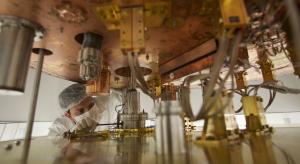
The cryostat on the Cryogenic Underground Observatory for Rare Events detector is installed.
Going deep in search of elusive particle
The first glimpse of data from the full array of a deeply chilled particle detector operating beneath a mountain in Italy sets the most precise limits yet on where scientists might find a theorized process to help explain why there is more matter than antimatter in the universe.
This new result is based on two months of data collected from the full detector of the CUORE (Cryogenic Underground Observatory for Rare Events) experiment at the Italian National Institute for Nuclear Physics’ (INFN’s) Gran Sasso National Laboratories (LNGS) in Italy. The goal is to gain more insight into the nature of the elusive neutrino.
The Department of Energy’s Lawrence Berkeley and Lawrence Livermore national laboratories supplied roughly half of the crystals for the CUORE project.
The international CUORE collaboration has about 150 members from 25 institutions. The U.S. nuclear physics program has made substantial contributions to the fabrication and scientific leadership of the CUORE detector.





